Back pain is often related to buttocks, core muscles, and pelvic issues. Isolating the source will help determine effective home remedies.
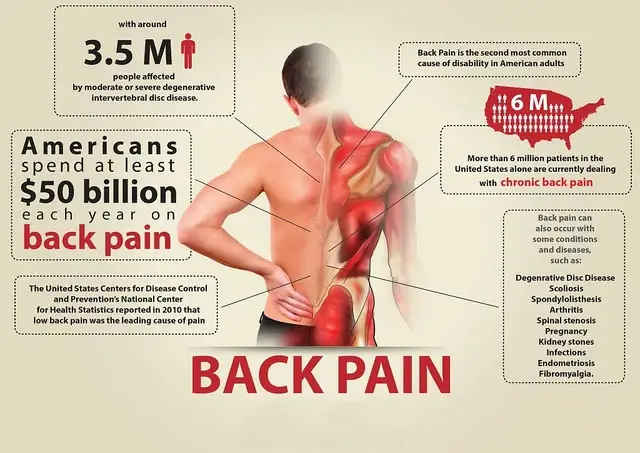
When you suffer from backache, it can significantly impact your daily life and hinder your performance in various activities — whether it’s working at home or in the office, playing golf on weekends, or simply bending over to wash your hands. Routine tasks like driving, walking, and sleeping become extremely challenging.
To develop an effective self-care plan, you first need to know the cause of back pain.
Long-term improper sitting, standing, or walking can put pressure on the back, leading to muscle strain, tension, or spasms that can cause muscle knots and eventually result in throwing out your back.
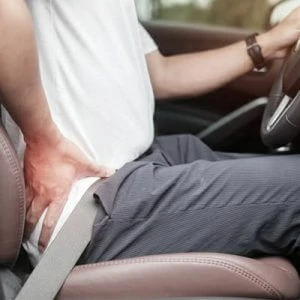
Unfortunately, misdiagnosis can cost patients time, energy, and money, and these surgeries may not fix the underlying cause of their signs. It turns out that muscle knots have always been the main culprit.
This solution is suitable for the following conditions: your backache appears on both sides of the back, or pain on one side, or it is lower back pain above the hip.
How do muscle knots cause back pain?
In today’s tech-driven American lifestyle, people are constantly glued to their mobile phones and computers. Maintaining the same posture for prolonged hours each day keeps the muscles perpetually tensed, leading to the development of muscle knots at the points where muscle fibers connect.
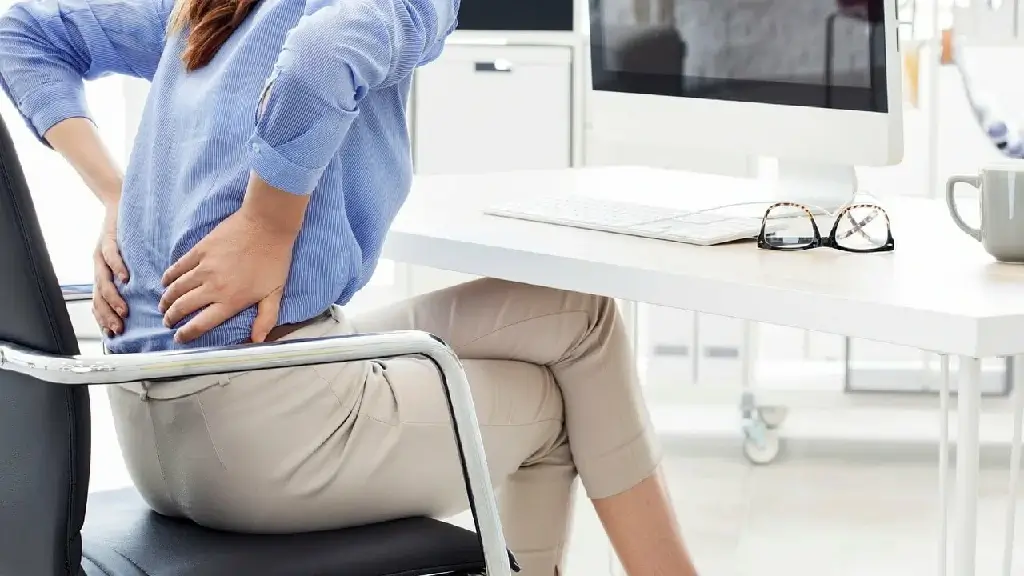
These muscle knots can cause muscle stiffness and discomfort, leading to chronic backache. In addition, muscle knots may lead to muscle instability, causing joint discomfort and exacerbating back pain.
Releasing muscle knots can help relieve chronic back pain, restore muscle vitality and balance of strength, and maintain joint stability.
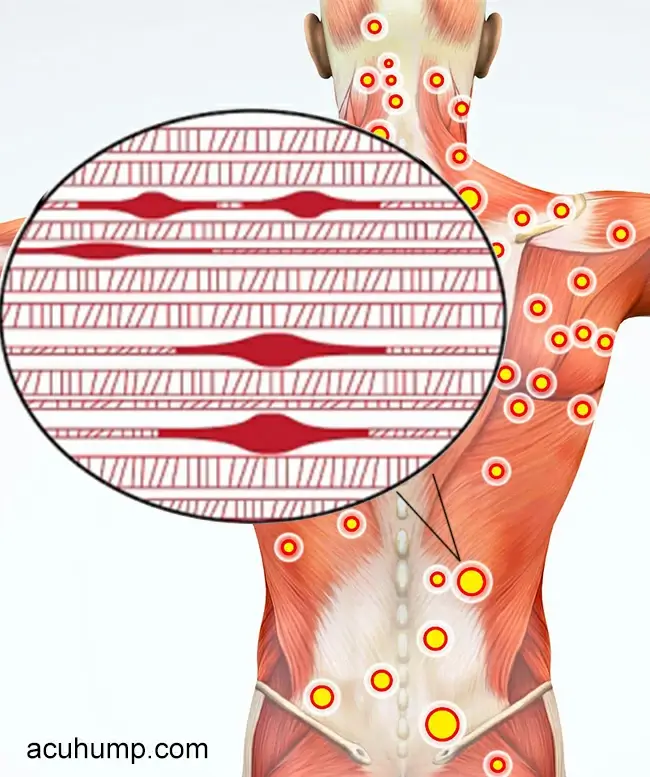
Everything is connected, so a fault in one part can cause trouble in another. Muscle knots in other areas can also lead to back pain. Releasing muscle knots in various parts of the body in a timely manner can relieve back pain in daily life.
What does a muscle knot look like?
They are located deep within muscle tissue, usually invisible on the skin surface.
Muscle knots, also known as myofascial trigger points, are not actual physical knots in the muscles, but areas of local tension within muscle tissues. This tension usually feels like a small, hard nodule or lump in the muscle and may be associated with tenderness, localized pain, or referred pain in other parts of the body when touched.
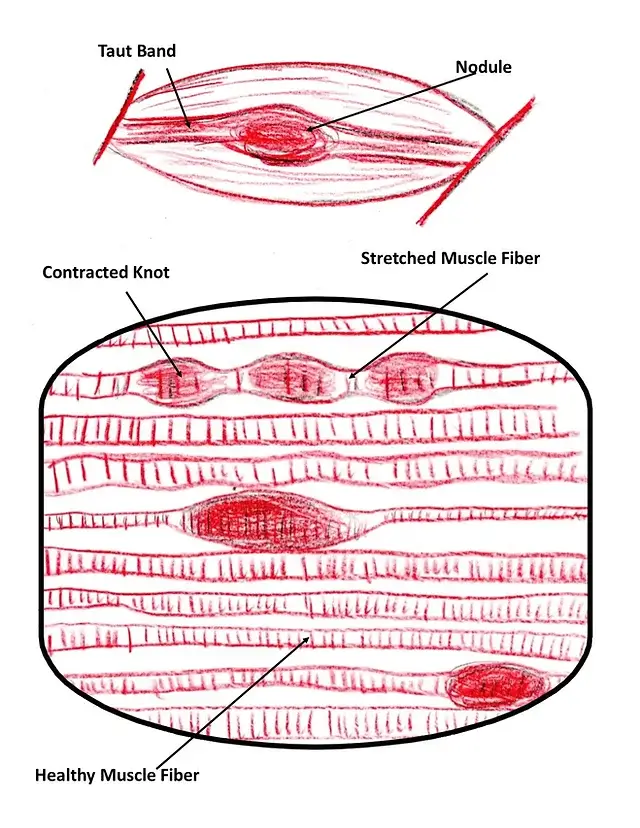
What causes muscle knots?
Spending lengthy periods sitting and engaging in gardening activities inevitably results in prolonged muscle contractions, making it easier for muscle tension and trigger points to form.
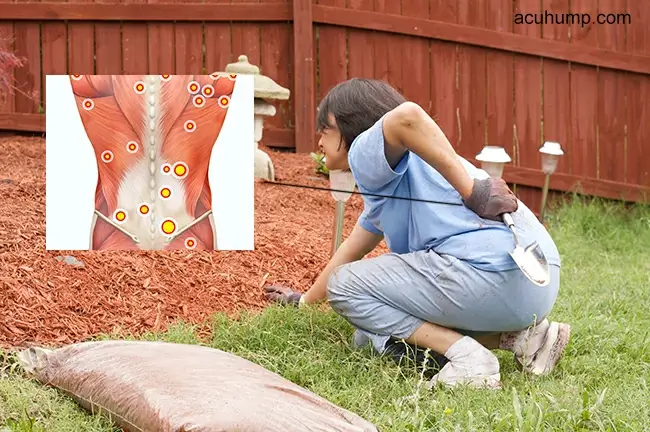
Our tendency to curl up on the couch or slouch in chairs creates repetitive strain and poor posture, leading to increased muscle tension and the development of muscle knots.
When we’re fatigued from work and lack exercise, certain muscles become overactive while others become underactive, contributing to the formation of muscle knots.

Household tasks such as sweeping and weeding place additional strain on the back and hip muscles, further exacerbating the development of muscle knots.
It’s important to note that muscle knots can originate not only from fatigued back muscles but also from tight butt muscles and weak core muscles. This is also why traditional back pain products, massage chairs, or massage guns are unable to address the underlying cause of the pain.
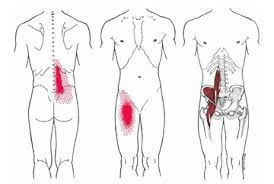
Do muscle knots go away on their own?
For a few people, minor muscle knots may disappear over time and with rest.
In most cases, without proper intervention, muscle knots can persist and even worsen over time, leading to continuous discomfort, movement initiation, and the potential transfer of pain to other parts of the body.
Trying some self-care measures, such as gentle stretching and massage, can fix most muscle knots for backache relief.
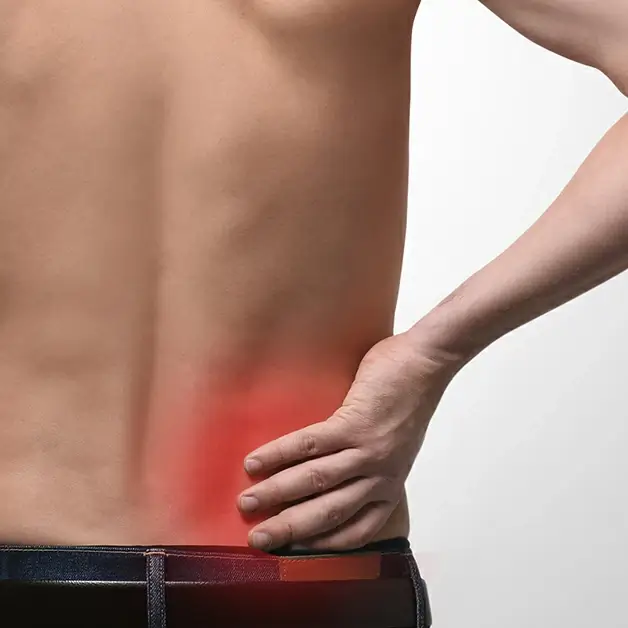
How do massage therapists relieve back pain?
If you are able to schedule a session with a massage therapist, they can employ various techniques to relieve backache.
They often begin by using gentle and sustained pressure with their palms to relax tense muscles and ready the muscle tissues for further treatment.
Following this, they may utilize the Muscle Knots Release with Compression technique, applying targeted and sustained pressure near trigger points using their fingers or elbows to stimulate deep tissue, helping muscle fibers relax and release painful points. This approach encourages blood circulation and relieves muscle tension.
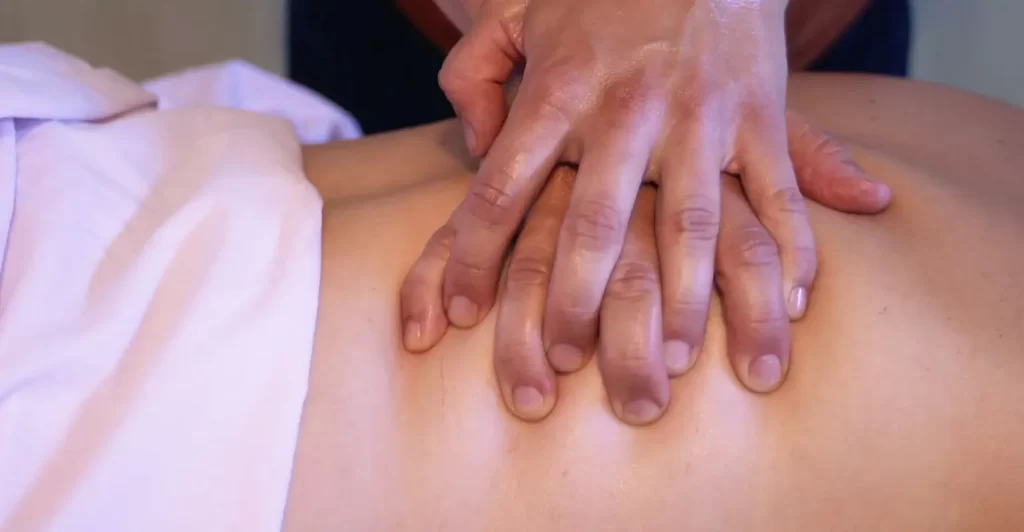
Additionally, they may incorporate body movement and stretching poses to further elongate the latissimus dorsi and glutes, working to eliminate knots, enhance flexibility, and alleviate overall pain.
If you are seeking methods to self-relieve at home without the need for appointments, look out for the following content!
How to release muscle knots in the lower back and buttocks?
You can achieve everything a massage therapist does for you at home. You just need the help of a new type of back pain product, the Acu-hump.
Will gather how to massage your deep tissues with the help of this massage tool and perform simple yet effective stretches.
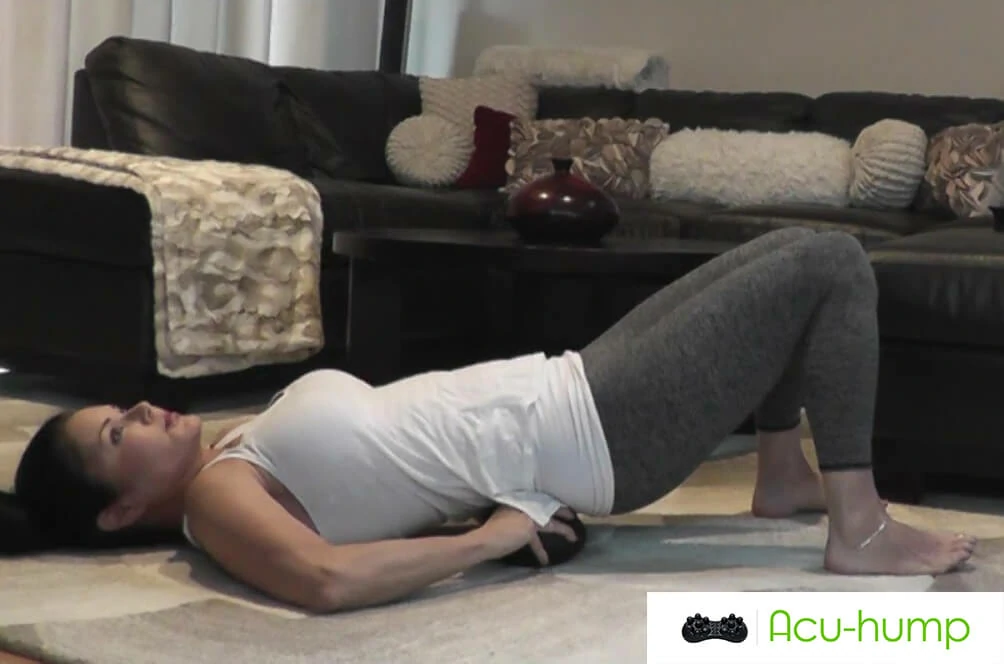
Self back massage tool
Unlike other massage tools, Acu-hump is designed based on Muscle Knots Release with Compression principles, using bodyweight to apply stationary, powerful pressure on deep tissues.
This is a back and hip massage tool. You no longer need an appointment; when tired, you can immediately place the Acu-hump under your back to release tense back muscles.

Its quirky shape features 14 different-sized massage humps. They solve discomfort by applying pressure to muscle knots and the surrounding muscles.
These massage humps will penetrate your muscles 0.3” to 0.8” deep, and the tighter your back, the more intense pain you will feel. With repeated use, the knotted muscles will gradually loosen, and the discomfort during use will gradually diminish.
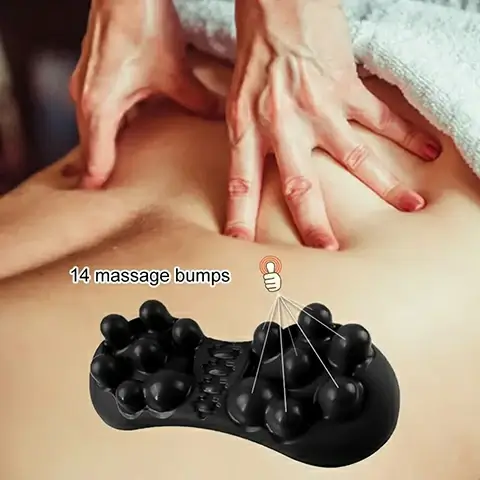
Using Acu-hump, you can break up knotted muscles yourself, providing relief and promoting muscle recovery.
It is your in-house masseuse.
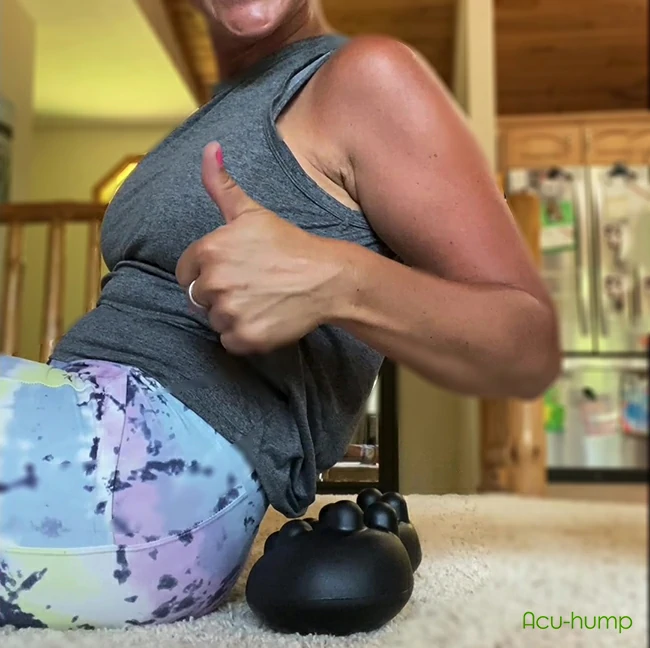
Take Acu-hump with you when traveling or on business trips. It weighs only 1 pound, not adding too much burden to your luggage. You can get the results of muscle knot release techniques anywhere.
Stretching exercises: accelerating the release of stiff muscles
Professionally developed by physical therapists and massage therapists, the Acu-hump stretching program presents an ingenious solution, providing muscle knot release techniques within the comfort of your home.
This innovative program effectively activates tight back, buttocks, and core muscles, delivering a comprehensive stretching manual as part of the package. The stretching manual is available in print and can also be accessed online on our website.
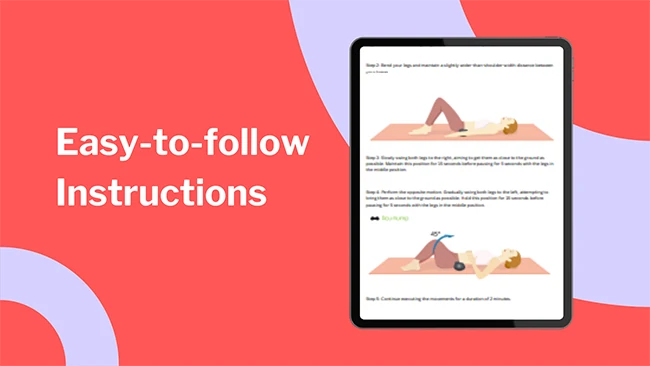
By following the detailed instructions in the Acu-hump stretching manual, you can effectively stretch and release muscle tightness in areas such as the low back, sacroiliac joint, buttocks, hamstrings, and core muscles.
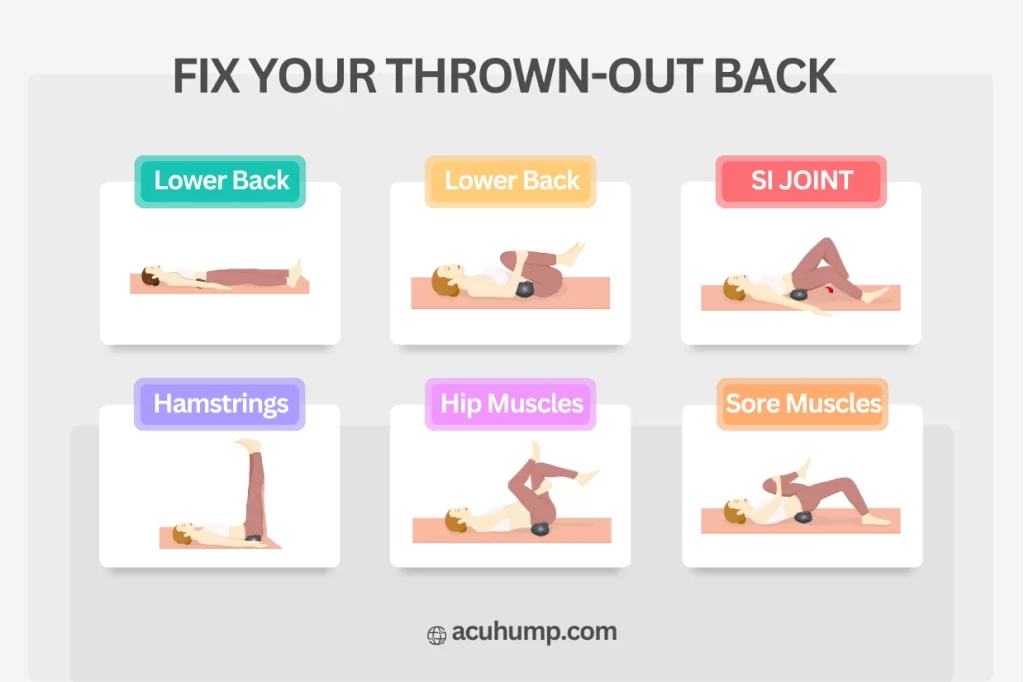
The Acu-hump program is conveniently available for purchase on Amazon and comes with a 30-day full refund policy, allowing you to try it risk-free.
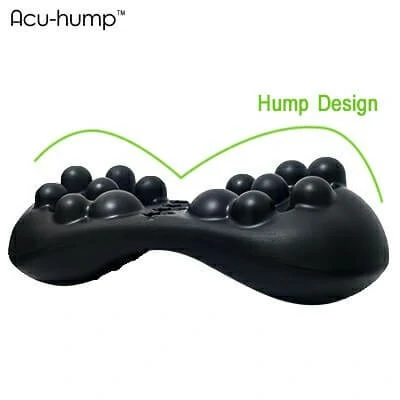
Acu-hump®
Release Muscle Knots in the Back
As an added bonus, a $50 value stretching video is included for free before your purchase.
To expedite the healing of muscle tightness, consistent self-massage and adherence to the low back and butt stretching exercises are vital. Moreover, maintaining good posture, ensuring proper rest, and adopting corrective positioning can significantly contribute to the gradual healing of muscle tightness, leading to long-lasting relief for your back.
In summary, muscle tightness can lead to substantial pain and discomfort in the back and hips. Understanding the underlying causes and learning effective muscle release techniques is crucial in alleviating pain and enhancing your quality of life.
The Acu-hump program, as a self-massage tool, can be an invaluable addition to your daily self-care routine, effectively addressing muscle tightness in your back and hips. Take charge of your well-being and benefit from the innovative Acu-hump massage tool.
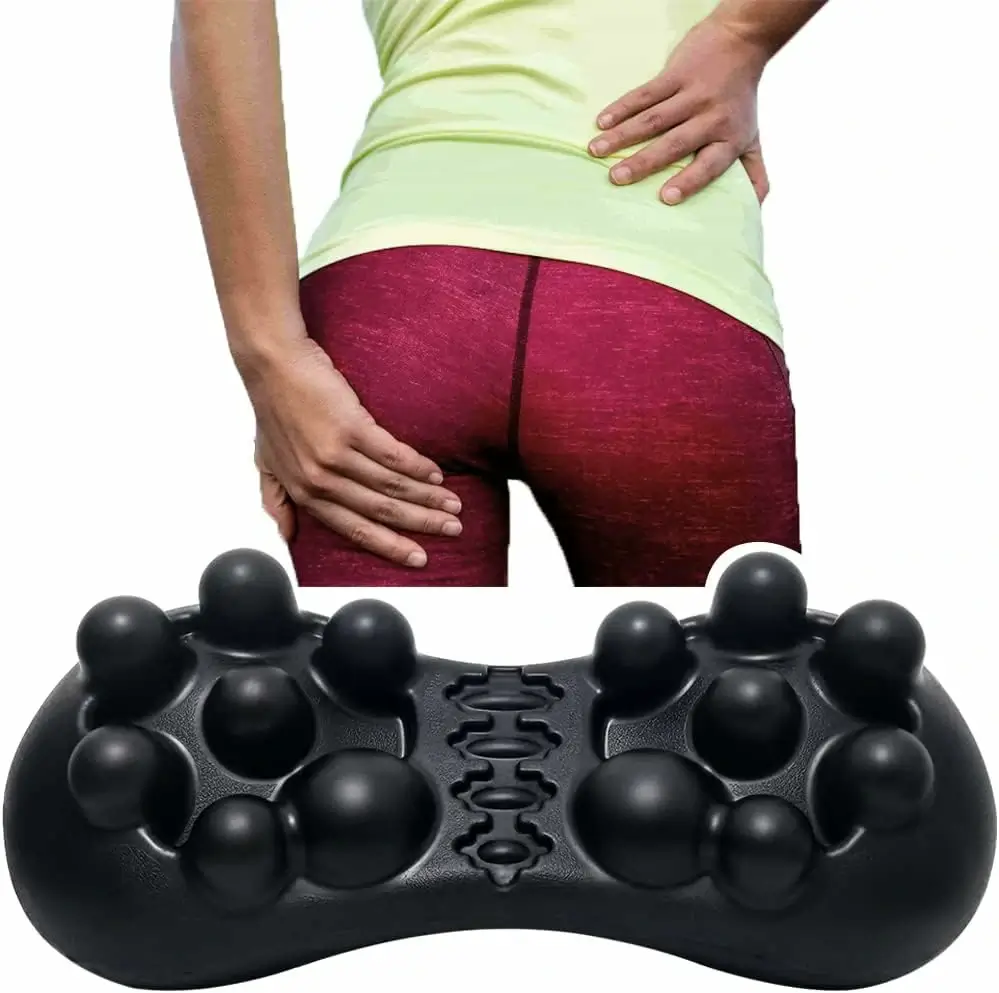
Acu-hump®
Release Muscle Knots in the Back
